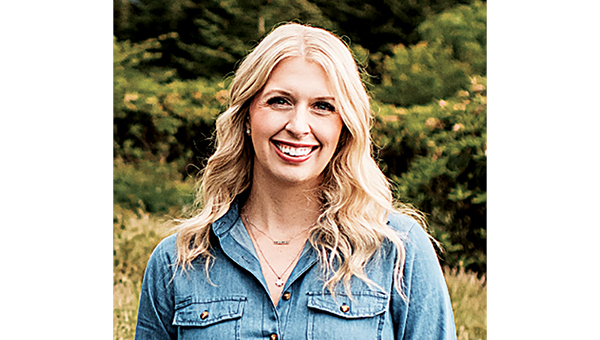NCAA lays out a plan for playing but warns of surging pandemic
Published 11:34 am Friday, July 17, 2020
|
Getting your Trinity Audio player ready...
|
BY RALPH D. RUSSO
AP COLLEGE FOOTBALL WRITER
The NCAA handed down its latest guidelines for playing through a pandemic while also sounding an alarm: The prospect of having a fall semester with football and other sports is looking grim.
If the games can go on, the NCAA says college athletes should be tested for COVID-19 no more than 72 hours before they play, players with high-risk exposures to the coronavirus should be quarantined for 14 days and everybody on the sideline should wear a mask.
Trending
The nation’s largest governing body for college sports released an updated guidance Thursday to help member schools navigate competition, but it comes as the pandemic rages on.
Around the country, the number of COVID-19 cases is on the rise, and many states have slowed reopenings or reinstated social-distancing restrictions on some businesses.
“This document lays out the advice of health care professionals as to how to resume college sports if we can achieve an environment where COVID-19 rates are manageable,” NCAA President Mark Emmert said in a statement.
“Today, sadly, the data point in the wrong direction. If there are to be college sports in the fall, we need to get a much better handle on the pandemic.”
The recommendations were developed by the NCAA COVID-19 Advisory Panel, Autonomy-5 Medical Advisory Group, representing the ACC, Big Ten, Big 12, Pac-12 and SEC, and other medical groups.
The Autonomy-5 or Power Five conferences also intend to provide their own similar guidance to schools. A copy of that document, which has not been finalized, was obtained by The Associated Press and first reported on by Sports Illustrated.
Trending
Even before the NCAA’s announcement, the American Athletic Conference said it planned to require its schools to meet or exceed NCAA guidance.
Among the highlights of the NCAA’s recommendations:
— Test results should be obtained within 72 hours of competition for athletes competing in so-called high-contact risk sports, such as football, basketball, hockey, and lacrosse.
— Face shields should be integrated into sports where feasible.
— Masks should be worn by everyone on a sideline, including when an athlete moves from the playing field to interact with a coach.
— CDC guidelines should be used for determining when individuals can resume activities after testing positive for COVID-19. Time-based strategy means isolation until 72 hours after recovery and at least 10 days after symptoms first appeared.
— All individuals with high-risk exposure must be quarantined for 14 days.
The final point could be crucial for managing a team this season. Simply being deemed a close contact of someone who tests positive could sideline players for two weeks.
At this point, though, the hopes of being able to conduct a college football season in the fall are dimming. Plans are already being made to modify it.
The Big Ten and Pac-12 announced last week that they would play only conference games in football and other sports to help minimize potential disruptions caused by COVID-19.
The Big East joined those leagues Thursday by going conference-only for the fall season, which for the basketball-focused league includes men’s and women’s soccer, men’s and women’s cross-country, volleyball, and field hockey.
Other FBS conferences have not decided yet on scheduling formats for the coming football season, instead waiting until late July. The regular season is scheduled to begin around Labor Day weekend, with dozens of game slated for Sept. 3-7.
“Right now we’d like to buy as much time as possible,” AAC commissioner Mike Aresco told Sports Talk 790 in Houston.
Meanwhile, the Mid-Eastern Athletic Conference on Thursday became the third Division I conference to say it will not have a fall sports season.
The MEAC, comprising 11 historically black colleges and universities, joined fellow FCS conferences the Ivy League and Patriot League in punting on fall football and other sports, with the hopes of making them up in the spring semester if possible.
At most major college football schools, athletes started coming back to campus in June to participate in voluntary workouts in team facilities. This week football teams were allowed to begin mandatory team activities, including unpadded walk-through practices.
Over the last month and a half schools have been testing athletes regularly, and already some flare-ups of the virus have caused activities to be shut down at schools such as Ohio State, Kansas State, Houston, and North Carolina.
At many schools, positive tests among athletes have been minimal. On Thursday, Oklahoma reported it had zero positive tests among 98 football players tested the day before.
The problem is colleges and their athletic departments are not operating in a true bubble the way the NBA is doing with its teams in Florida.
If states and communities are struggling to contain the virus, it makes it more difficult to keep athletes safe — especially when the full student body arrives on campus.
It also becomes more problematic for athletic departments to potentially contribute to the spread of infection by gathering large groups of people to engage in contact sports, and then sending them back out on campus and into the surrounding communities.
“So nothing that occurs to the student-athlete is in a silo,” said Dr. Chris Kratochvil, executive director of the Global Center for Health Security at the University of Nebraska Medical Center. “And certainly we want to protect them, but we want to protect the broader community as well.”
Kratochvil, who heads the Big Ten’s Task Force for Emerging Infectious Diseases, said the availability of tests and how quickly results can be delivered, the availability of personal protective equipment used by healthcare workers and the stress on hospitals will all be considered when determining whether college sports can be played.
“Everything is connected,” he said.





